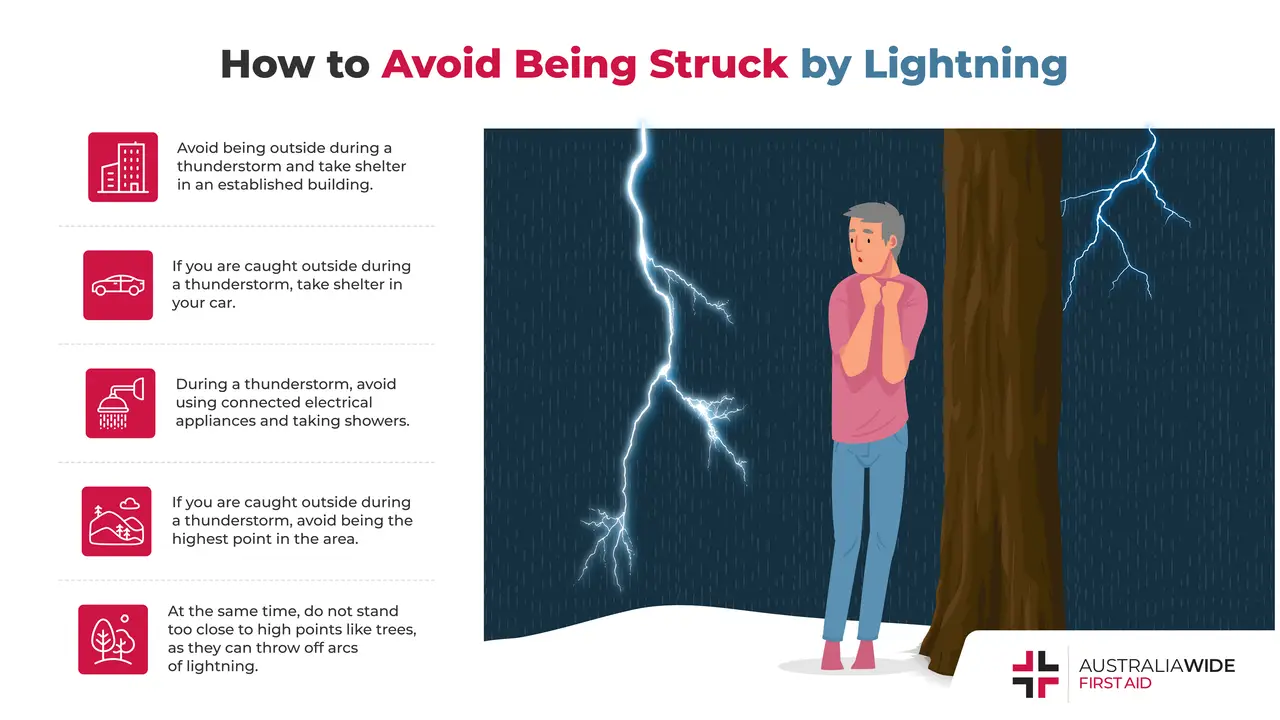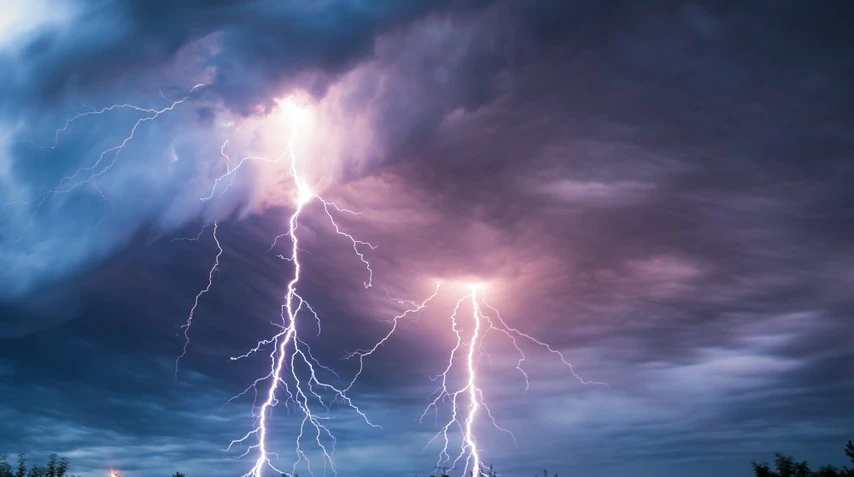How to Reduce Your Risk of Being Struck by Lightning


Lightning strikes are absolutely terrifying and yet, so beautiful to watch. From a far away distance.
The amount of energy in a single lightning bolt is 5 billion joules. It can heat the surrounding air and the temperatures can measure up to 30 000 degree Celsius!
That extreme heat can even vaporise the water inside a tree, creating hot steam that blasts the tree.
All these seem to come right out of a science fiction book, but they are facts and they do happen in the real natural world.
In this article, we will cover the science behind lightning strikes, how we can reduce our risk of being hit by one and the relevant first aid treatment. Let’s begin!
Very simply put, lightning is an electrical discharge that occurs when there is an imbalance of electrons in the clouds or between the clouds and the ground. Let’s dive into the details.
A storm cloud has positive and negative charges. The top of the storm clouds has more positive charge while the bottom has more negative charge.
How does this happen?
Generally, clouds are made up of millions of water droplets and ice particles that are moving or tossed about at incredible speed. Water from the ground evaporates, rising to the sky and as it reaches the clouds, the water droplets form clusters. They then collide with the water droplets in the clouds. During these collisions, the electrons are separated from the rising clusters of water droplets, leaving the electrons at the bottom of the clouds and the positively charged clusters of water droplets rising to the top of the clouds.
The static charges continue to build up. This causes the electric fields around the cloud to become so strong that they transform the surrounding insulating air into a conductor that transfers charges as a lightning bolt from the clouds to the ground.
Step ladders, for example, provide a path for the lightning bolt to follow or travel from the cloud to the ground. The excess electrons at the bottom of the cloud travel through the air to the ground at an estimated speed of 200,000 miles per hour. The electrons travel a zigzag path to the ground as the presence of certain particles or dust particles in the air makes those areas more conductive for the electrons to travel.
When our skin is dry, it has a high resistance to electric current. However, when we perspire, our skin becomes wet and the salt from the perspiration allows the ions in the water to move freely. This lowers the electrical resistance of our bodies, making the human body a great conductor of electricity. Thus, electricity can travel on the skin surface without any infiltration, making us highly susceptible to lightning strikes.
Five to ten Australians die from lightning strikes every year and over one hundred people get injured from lightning strikes annually. A UQ mathematician, Professor Peter Adams, calculated that Australians have a 1 in 12,000 chance of being struck by lightning, which is more than 650 times the chance of winning the Lotto, which is one in eight million.
An estimated two thousand thunderstorms happen globally at any moment in time, with a hundred lightning strikes every second. That is 10 000 000 lightning strikes each day! In 2021, the country with the highest lightning strikes was Brazil, which had more than 225,600,000 strikes. The country with the highest lightning density, meanwhile, was Singapore.
Situations that increase your risk of being injured by a lightning strike include:

Out of every ten people struck by lightning, 9 will survive the incident. However, lightning strikes can cause many medical and health problems for the survivors. They can suffer from:
In this article, we discussed how lightning strikes happen, the statistics for lightning strikes in Australia and the world, ways that you can reduce your risk of getting struck by lightning and the relevant first aid treatment.
To develop the knowledge and the skills to provide first aid in a wide variety of medical emergencies, book a date to learn First Aid with Australia Wide First Aid today!

October 1, 2024
Almost every job involves using the body to carry out some type of manual task. Some tasks may be hazardous, causing injuries such as musculoskeletal disorders (MSDs). Knowing how to manage them is a legal responsibility of all workplaces.

January 10, 2024
In Australia, workplace safety is a top priority, and First Aid plays a crucial role in ensuring the well-being of employees. Workplaces are expected to adhere to specific regulations and guidelines outlined by Safe Work Australia. How does your workplace stack up?

November 24, 2023
No matter how experienced you are as an outdoor activity leader, there are some things you should always do to keep your group safe. Nature can be unpredictable, and so it’s best to be prepared.